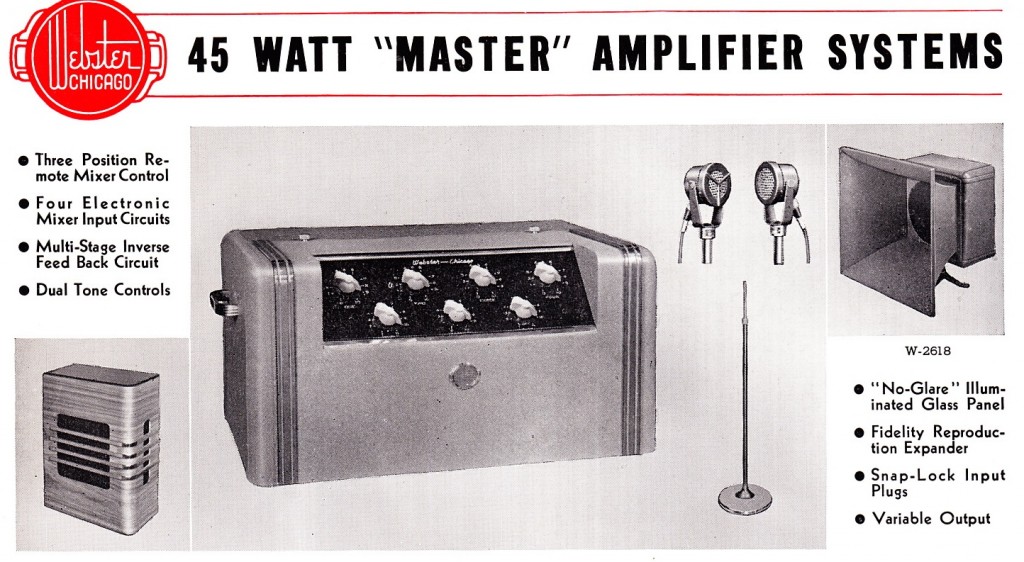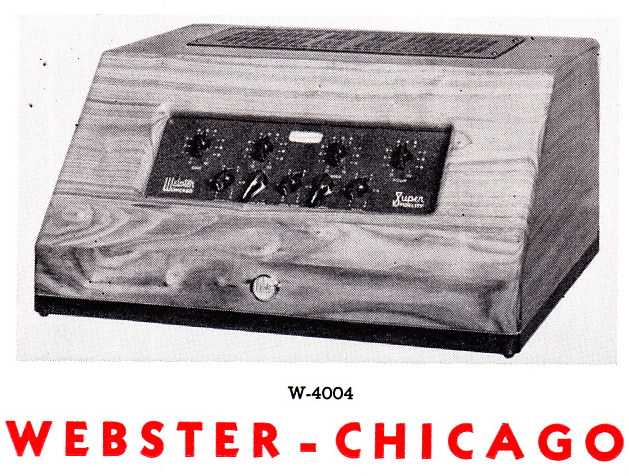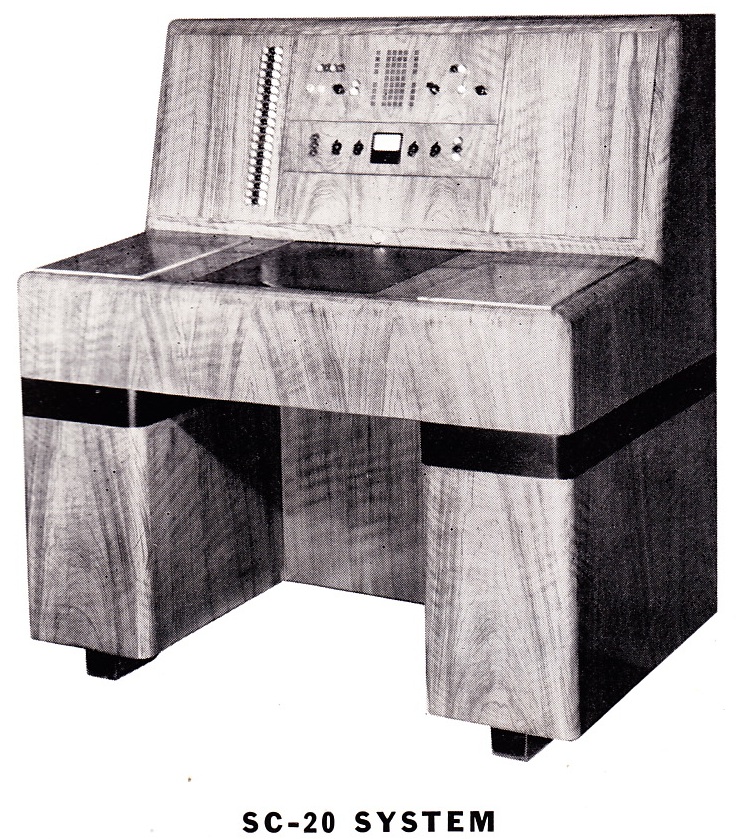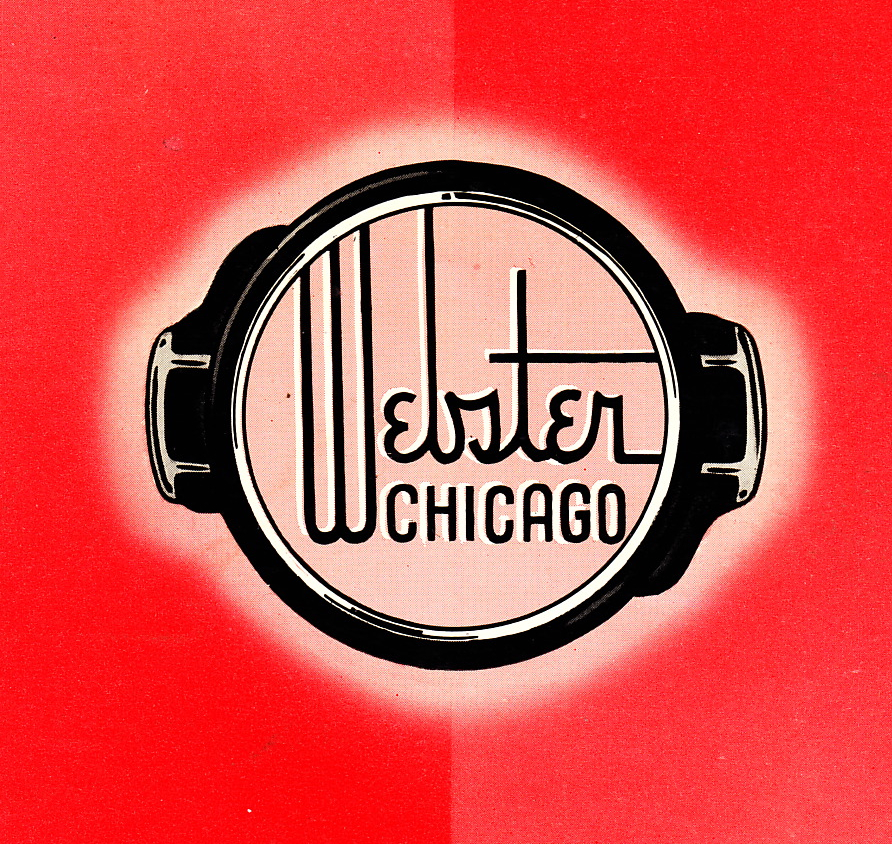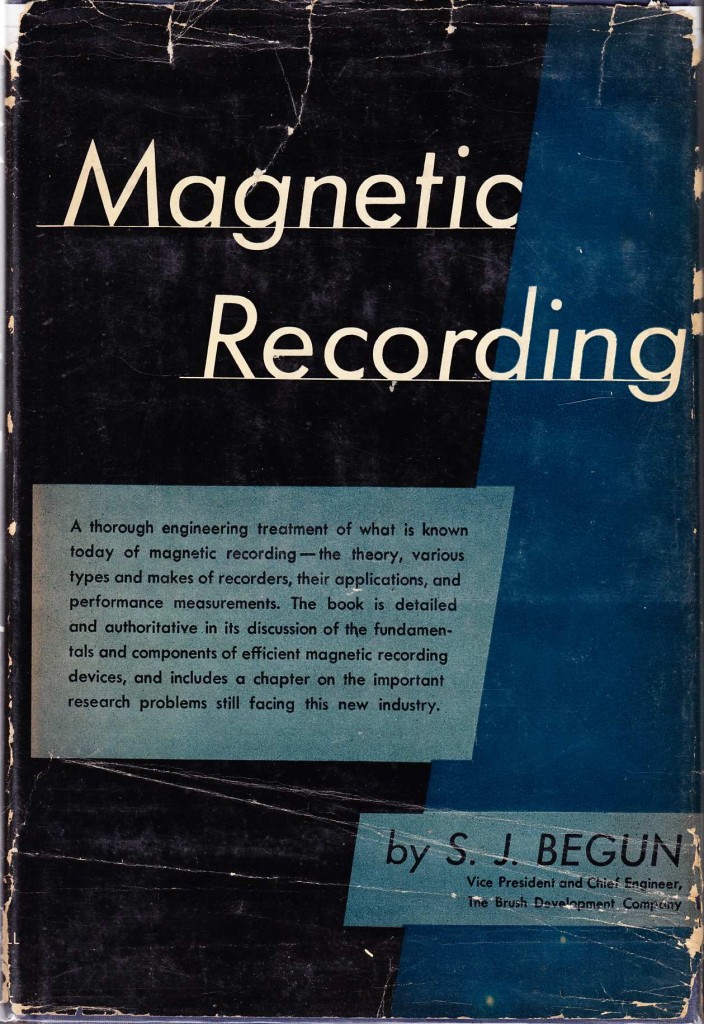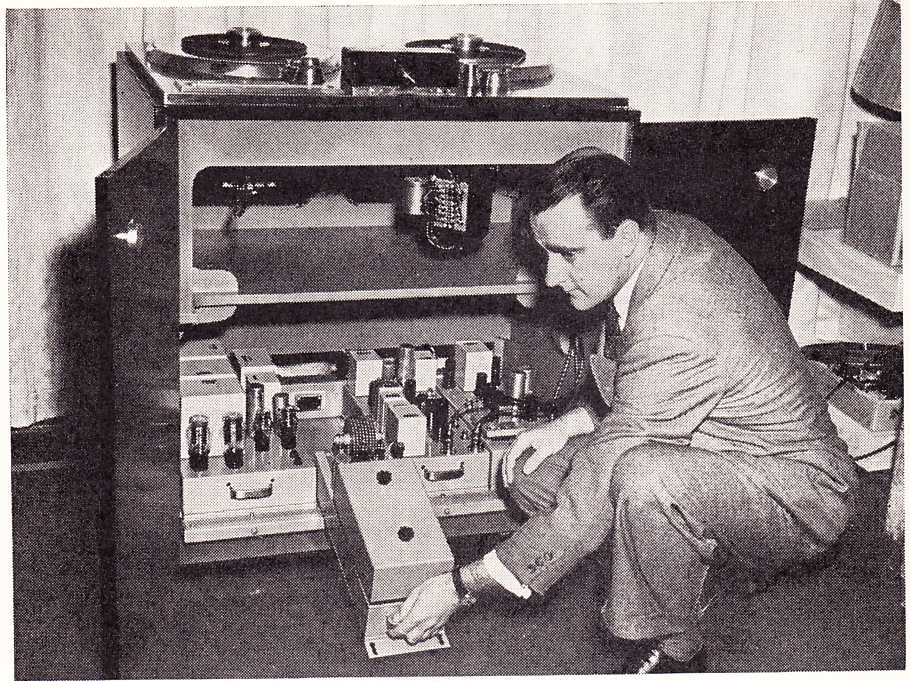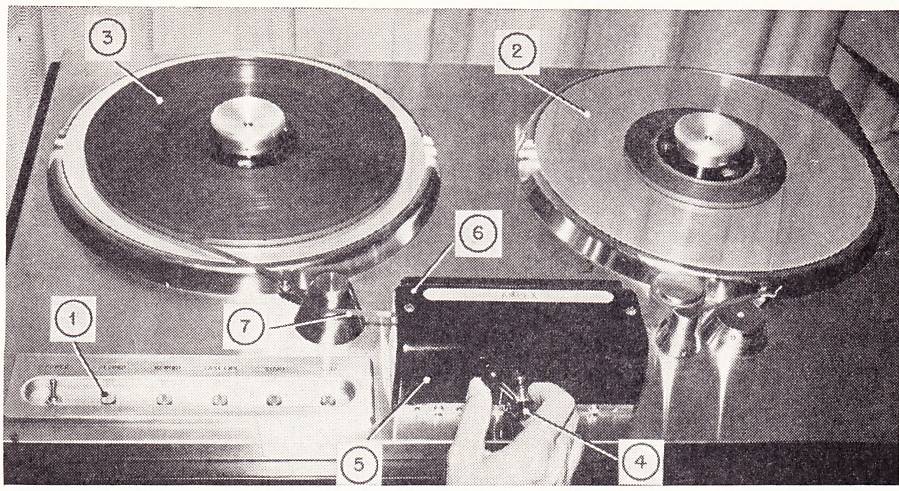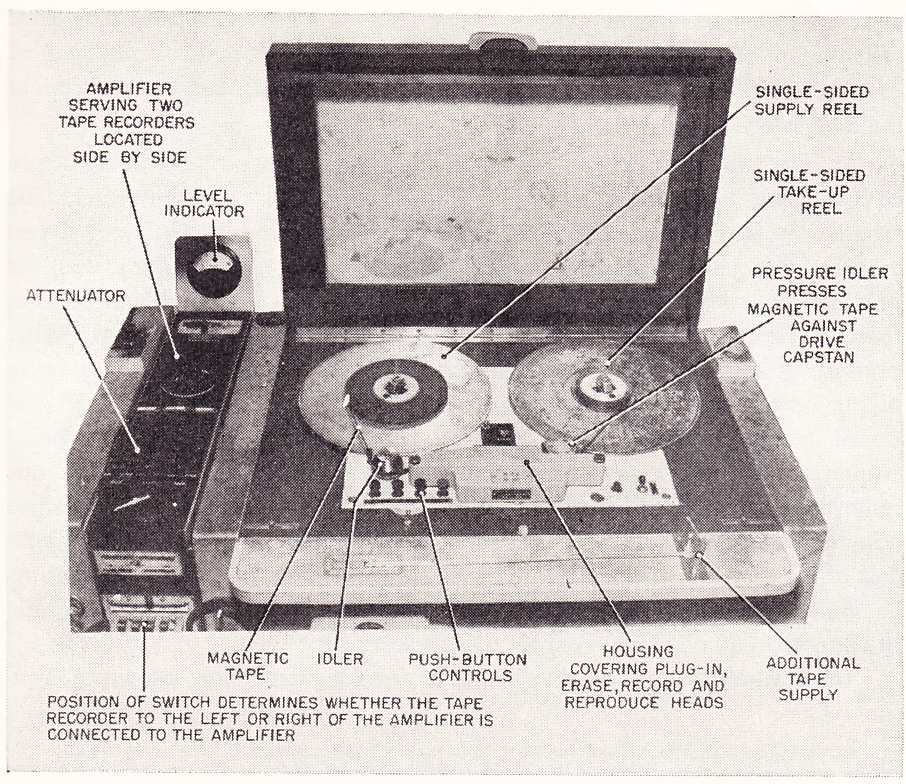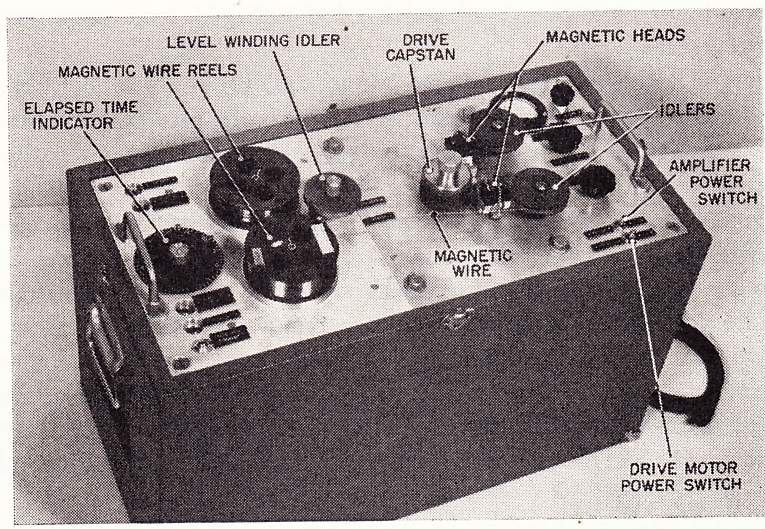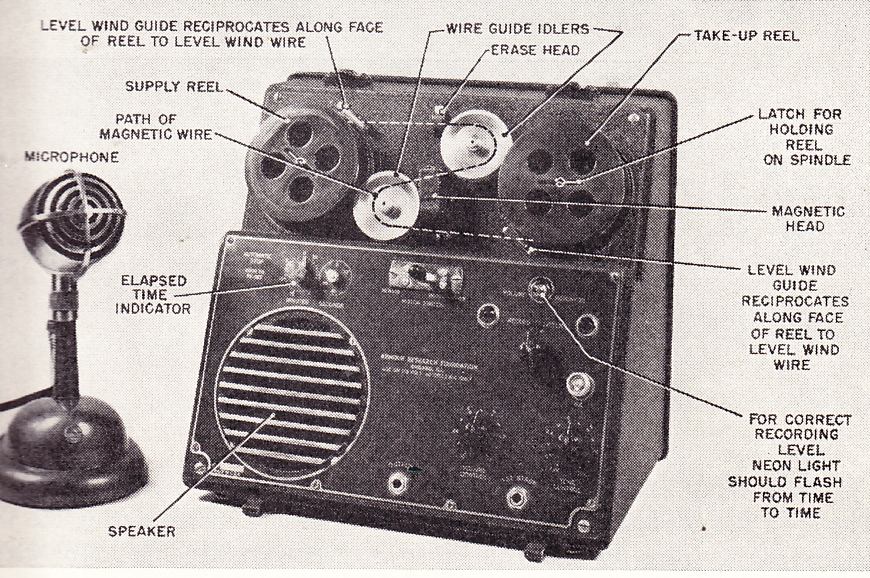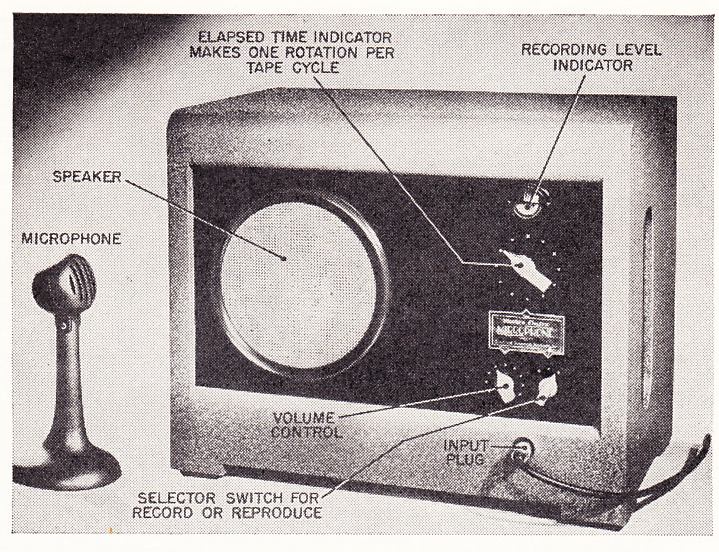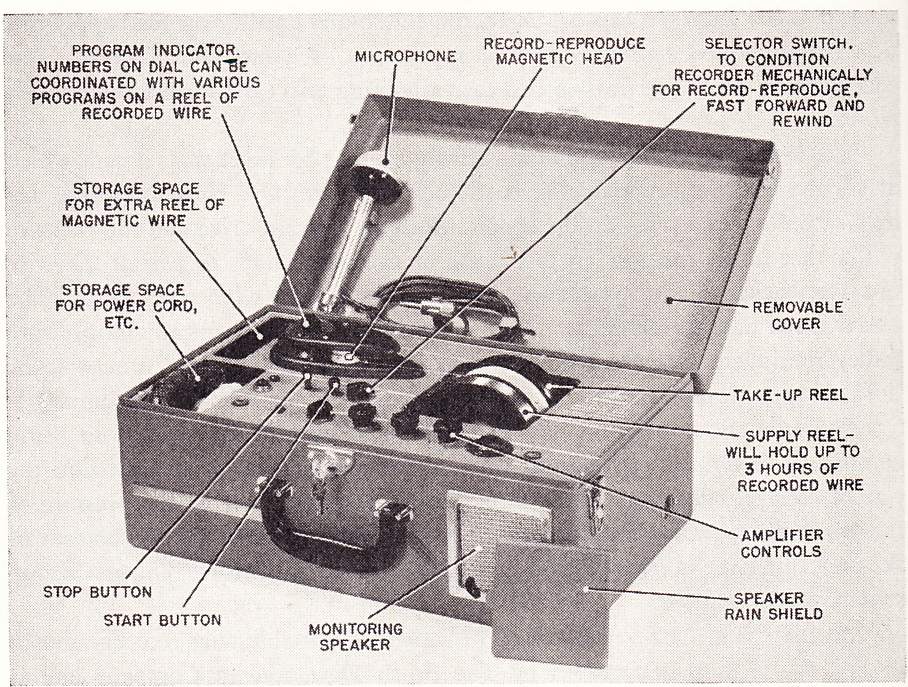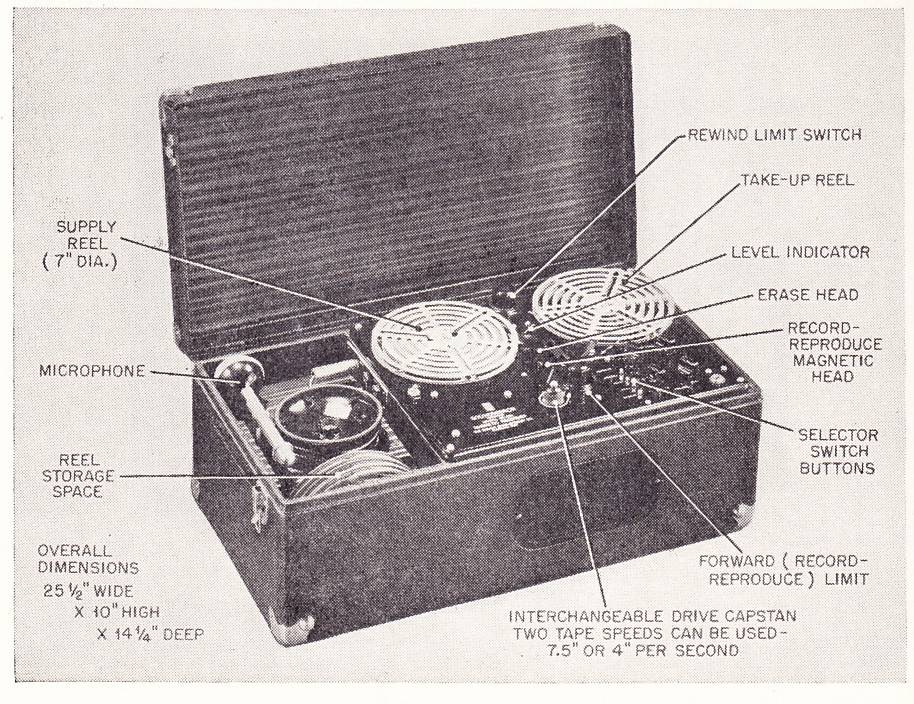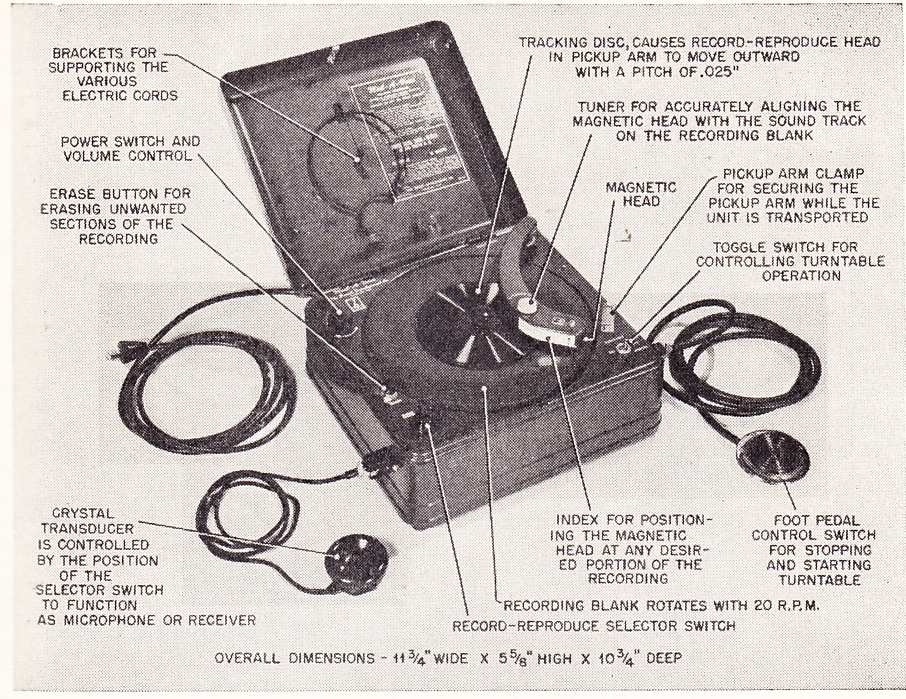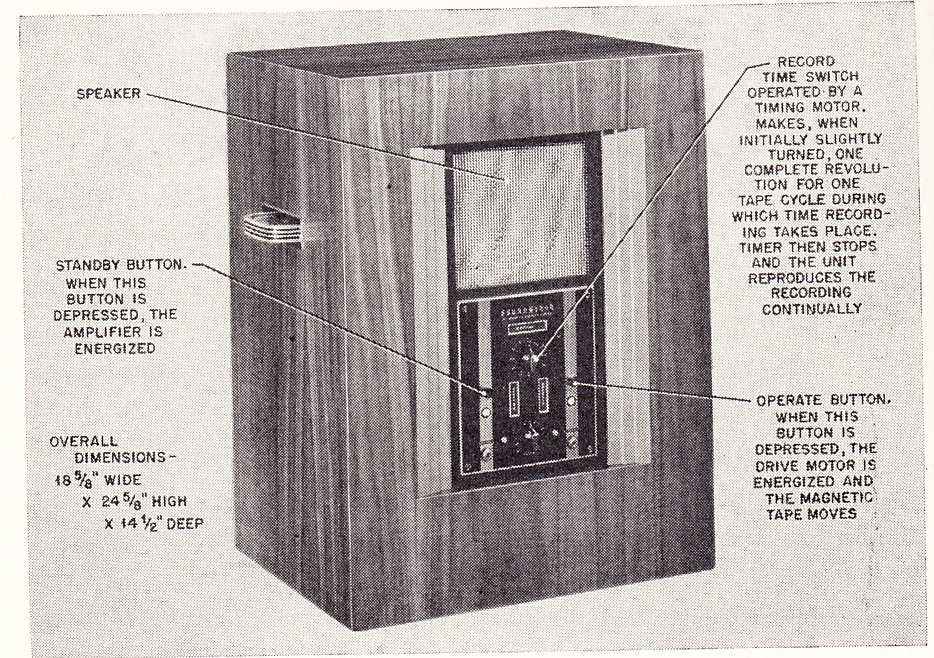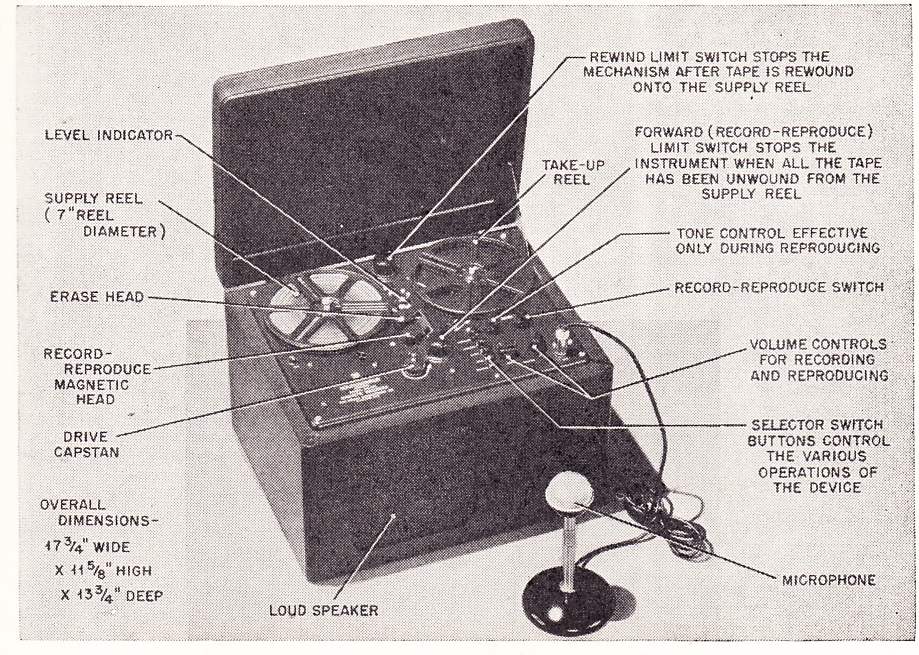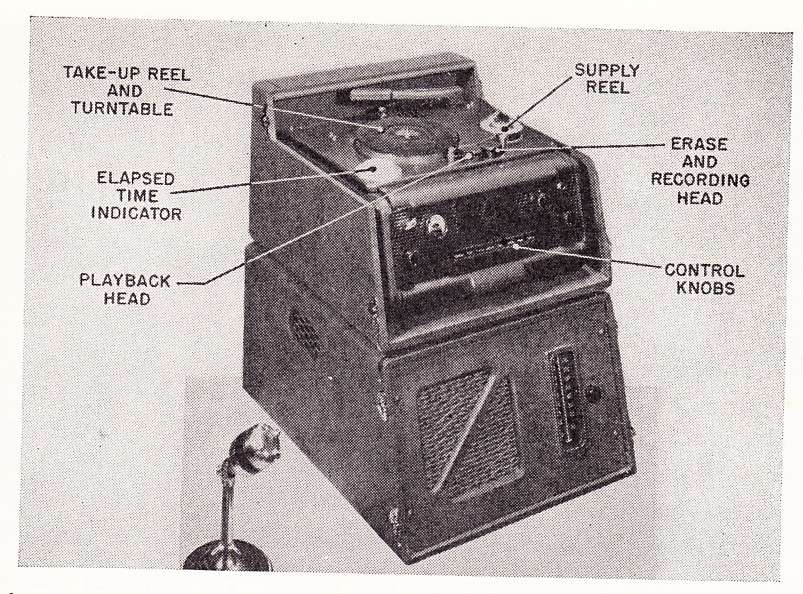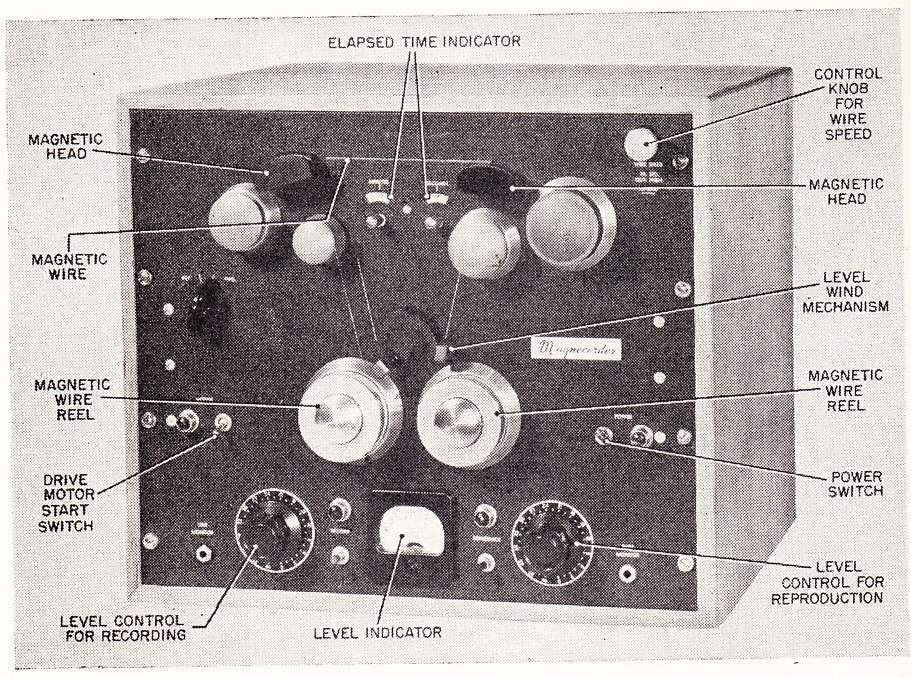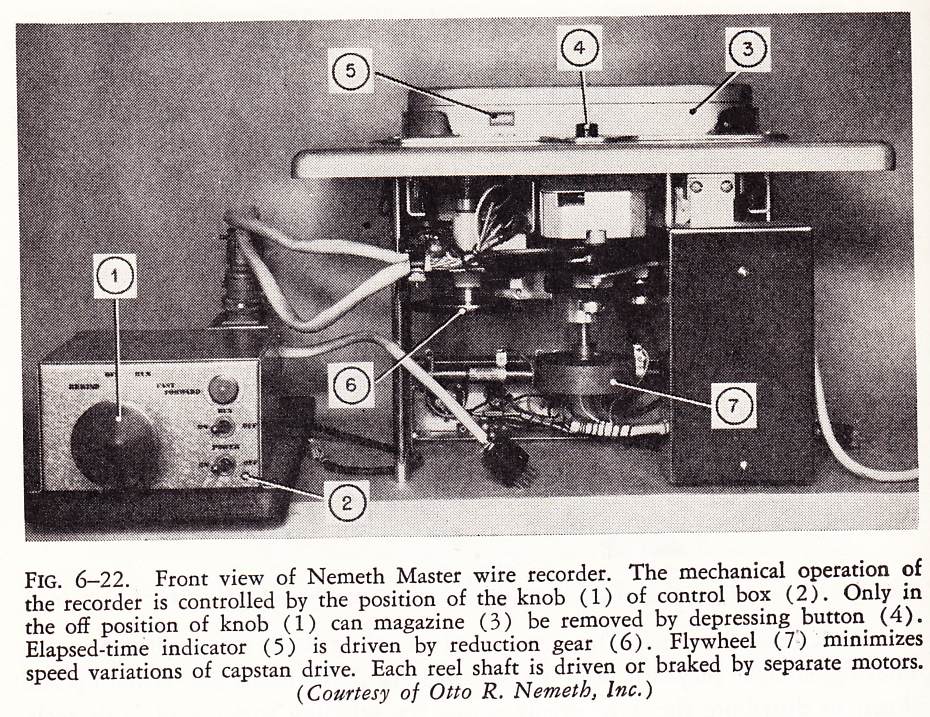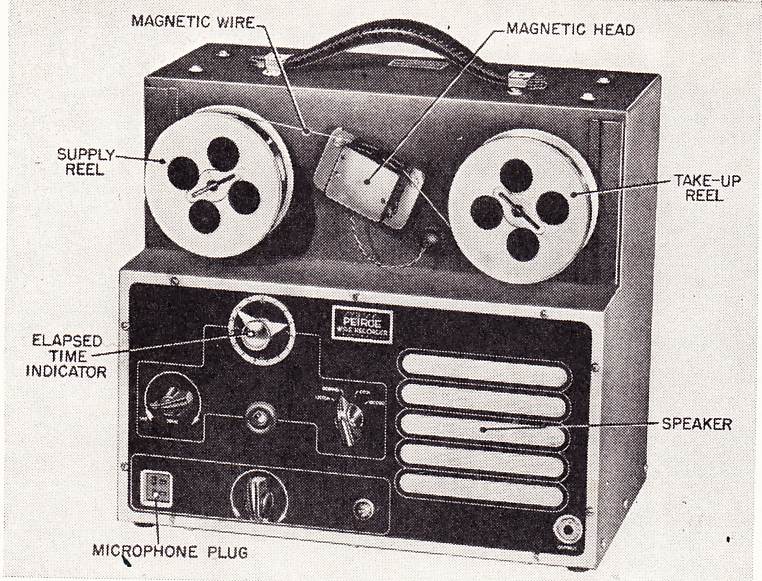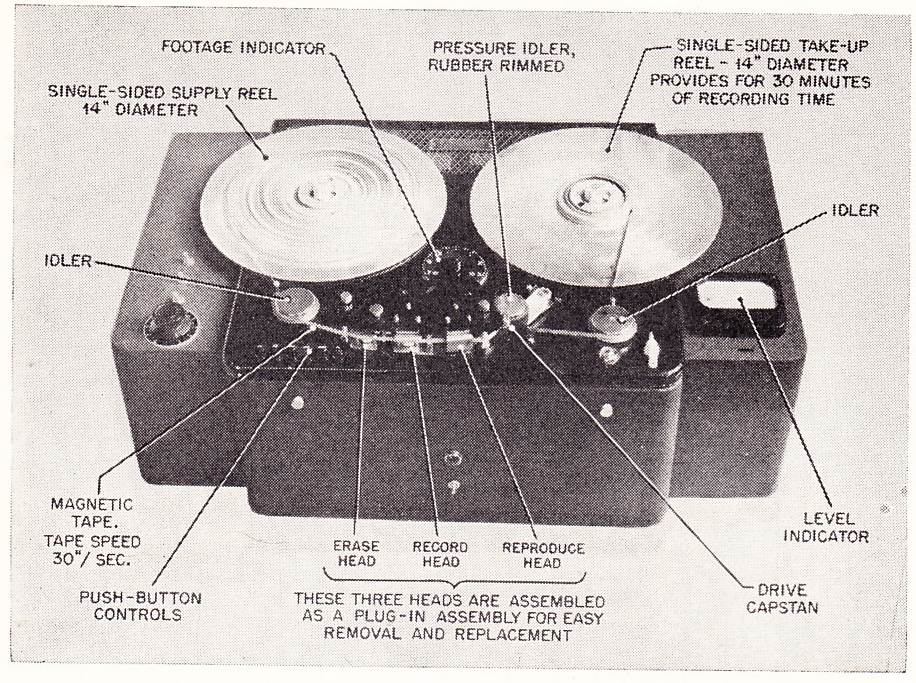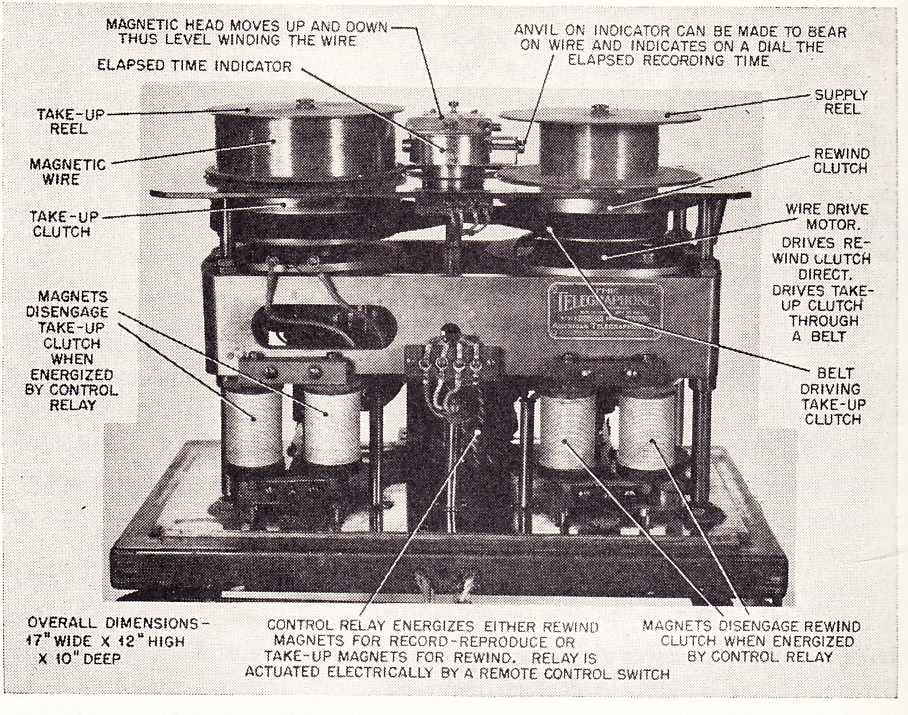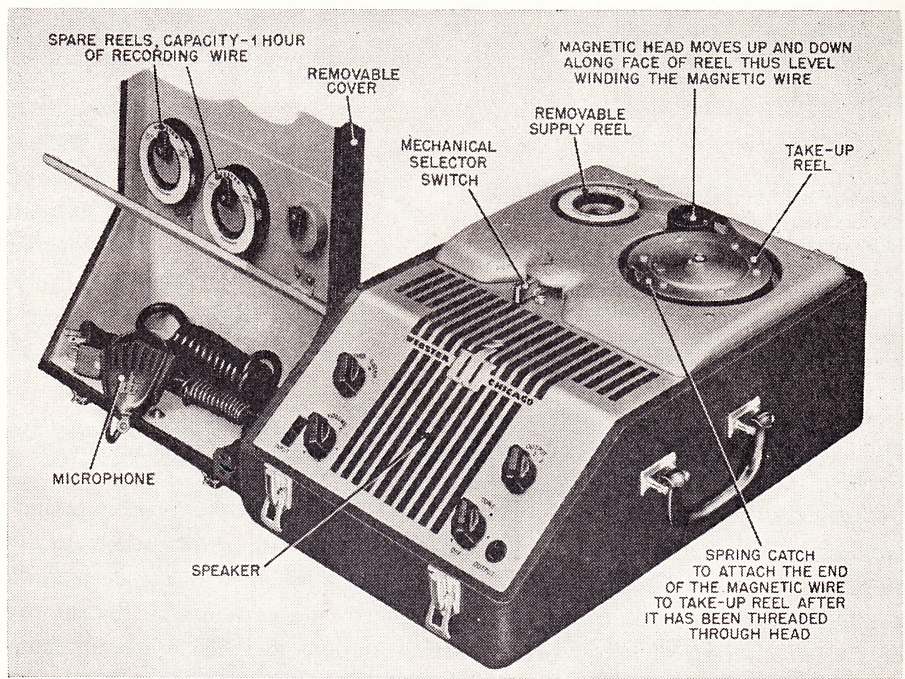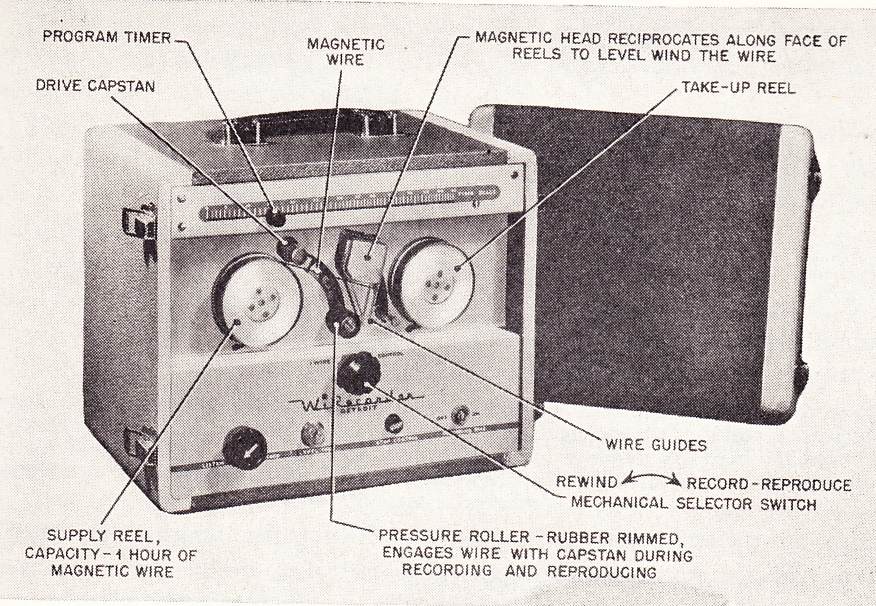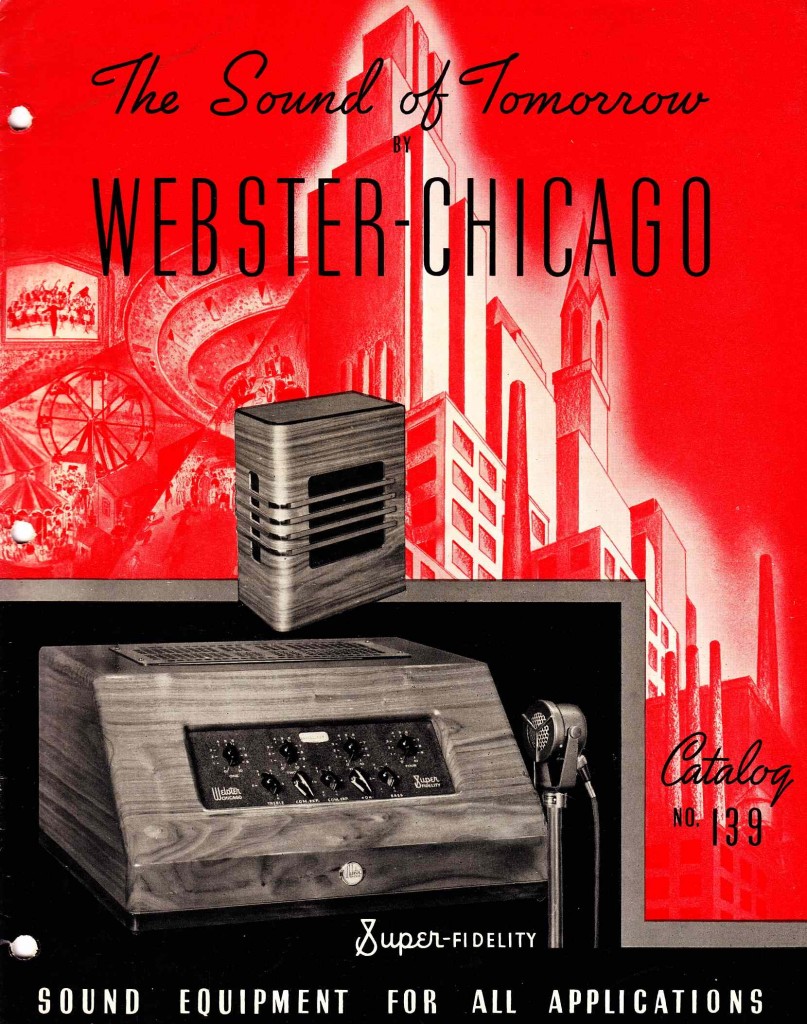 Download the 24pp 1939 Webster-Chicago Sound Systems catalog (in two parts due to size)
Download the 24pp 1939 Webster-Chicago Sound Systems catalog (in two parts due to size)
DOWNLOAD PART 1: WebsterChic_1939_1
DOWNLOAD PART 2: WebsterChic_1939_2
Products covered, with text, specs, and photos, include: Wesbter-Chicago Super-Fidelity Mixer W-4004, amplifiers W-4030, W-4070, W-4030; remote mixer controls W-903 and W-902; W-975, W-945, W-930 .W-920, W-830, W-814, W-808W-929, W-820 mixer/ amplifers; W-200 microphone matching transformer, W-1260 record changer, plus a host of speakers, intercom equipment, and microphones (appear to be re-branded Bruno, Turner, and EV units: W-1224, W-1245, W-1236, W-1242 and W-1243).
 Above: from page 2 of the catalog. The year is 1939. “Why Buy Sound Equipment? Because shouting is outmoded.” The ‘sound of tomorrow’ is electrically amplified sound. Shouting is a thing of the past. The sound of one human’s voice can now easily reach many tens of thousands of assembled individuals. The first recorded use of sound reinforcement (i.e., a PA system) was the inauguration of Warren G. Harding in 1922 (Bushnell, Ferree 2011). This was incredible technology at the time, technology that has given musicians infinite new possibilities for performnce. Technology that would also be used to devastating effect in Germany in the 1930s when one bitter man would be able to stir the passions of thousand of assembled individuals in ways that would have been impossible a mere decade early. Before the PA system: before electrically amplified sound: there were real physical limits to the dissemination of a vocal performance. That limit is no longer.
Above: from page 2 of the catalog. The year is 1939. “Why Buy Sound Equipment? Because shouting is outmoded.” The ‘sound of tomorrow’ is electrically amplified sound. Shouting is a thing of the past. The sound of one human’s voice can now easily reach many tens of thousands of assembled individuals. The first recorded use of sound reinforcement (i.e., a PA system) was the inauguration of Warren G. Harding in 1922 (Bushnell, Ferree 2011). This was incredible technology at the time, technology that has given musicians infinite new possibilities for performnce. Technology that would also be used to devastating effect in Germany in the 1930s when one bitter man would be able to stir the passions of thousand of assembled individuals in ways that would have been impossible a mere decade early. Before the PA system: before electrically amplified sound: there were real physical limits to the dissemination of a vocal performance. That limit is no longer.
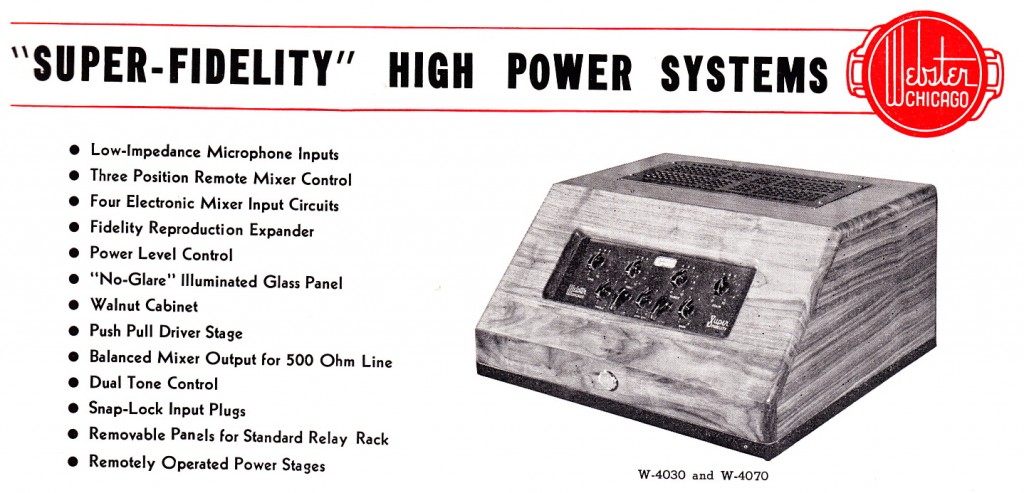 Above, Webster’s ‘super-fidelity’ high-power system intended for multi-speaker distribution in arenas ETC: no low-impedance voice-coil output is even offered on this unit. It does, however, offer two-band EQ and dynamic expansion/compression.
Above, Webster’s ‘super-fidelity’ high-power system intended for multi-speaker distribution in arenas ETC: no low-impedance voice-coil output is even offered on this unit. It does, however, offer two-band EQ and dynamic expansion/compression.
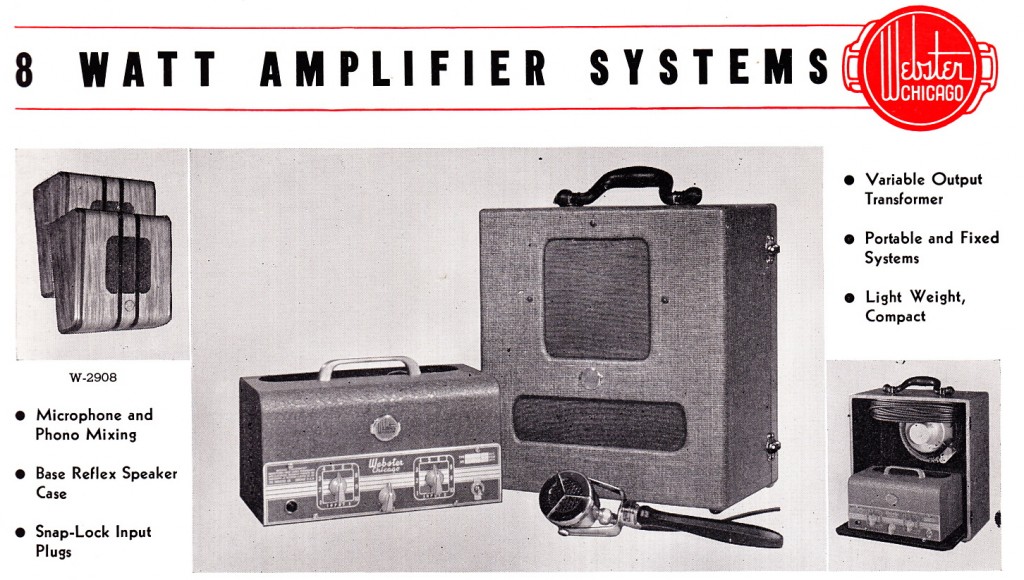 Above, Webster-Chicago’s most modest PA system, the 8-watt W-808. This was the first piece of antique audio equipment that I ever purchased: $75 at a multi-dealer antique shop on Wickenden st in Providence RI. My system came with an American D-4 dynamic mic, which I still own and which still works fine after all these decades. The amplifier and speaker worked too, although I could never figure out why there was a strong slightly off Bb bass-note that went along with everything that I played. This was several years before I had any awareness of filter caps, of course.
Above, Webster-Chicago’s most modest PA system, the 8-watt W-808. This was the first piece of antique audio equipment that I ever purchased: $75 at a multi-dealer antique shop on Wickenden st in Providence RI. My system came with an American D-4 dynamic mic, which I still own and which still works fine after all these decades. The amplifier and speaker worked too, although I could never figure out why there was a strong slightly off Bb bass-note that went along with everything that I played. This was several years before I had any awareness of filter caps, of course.
